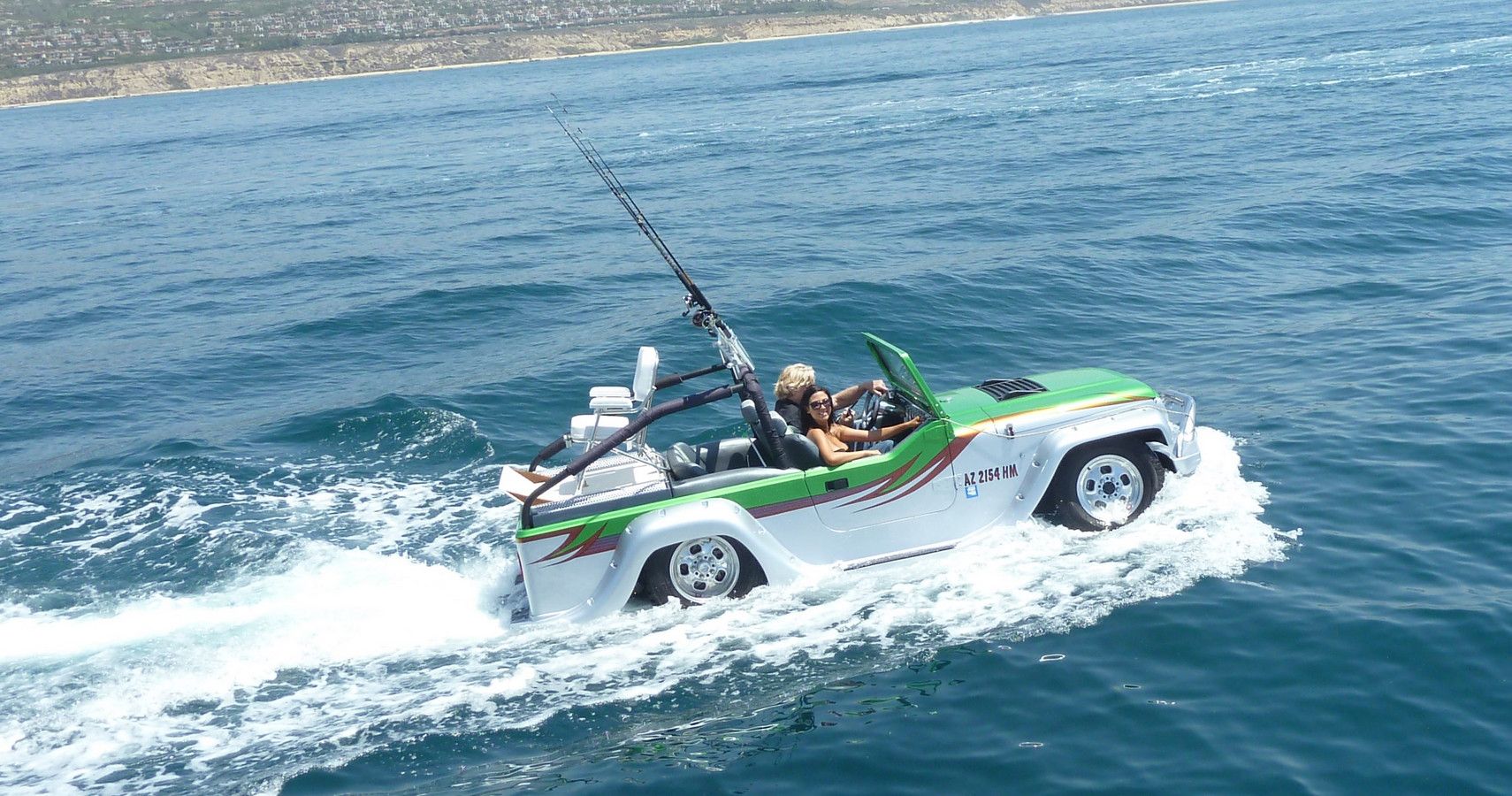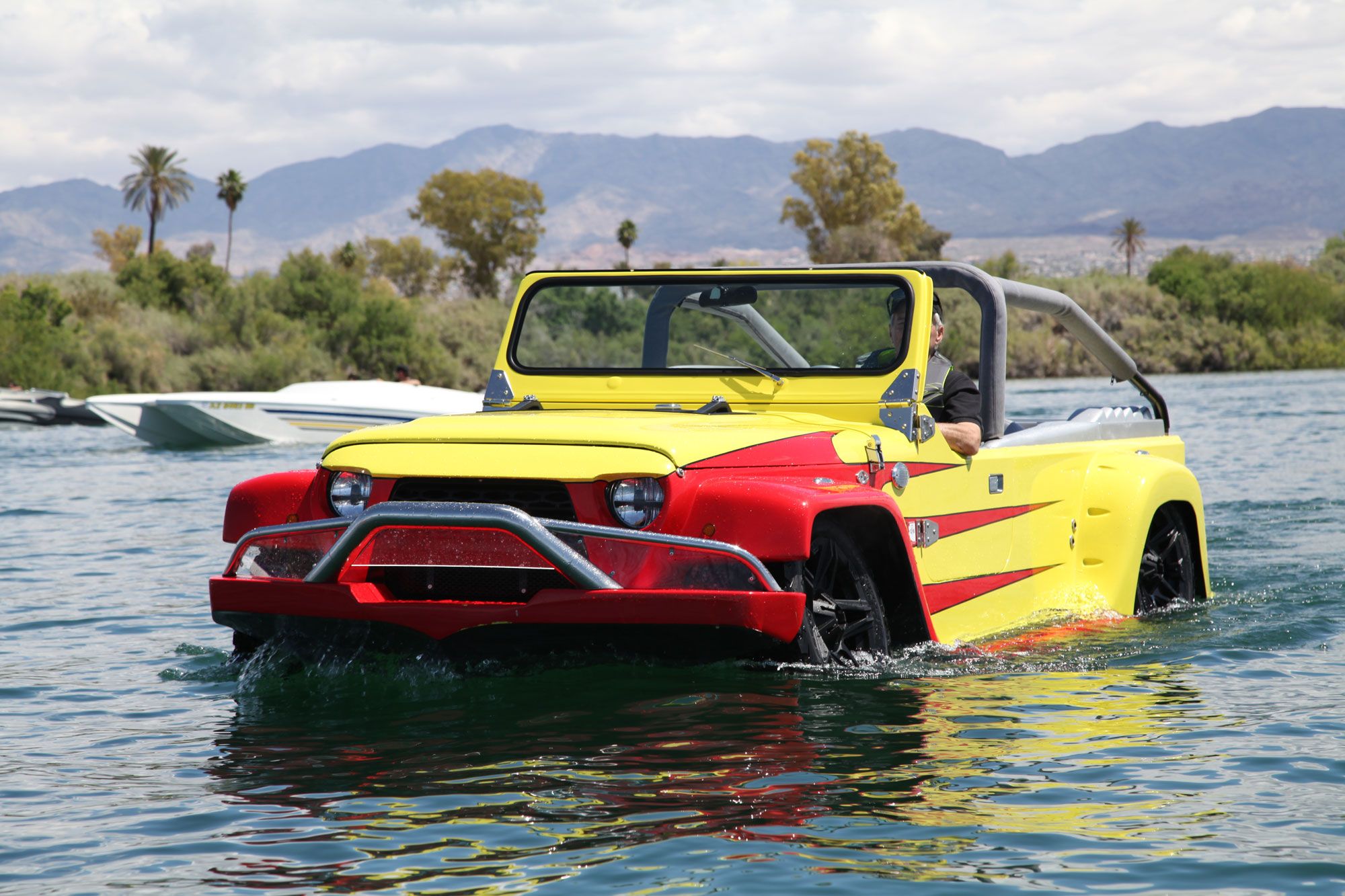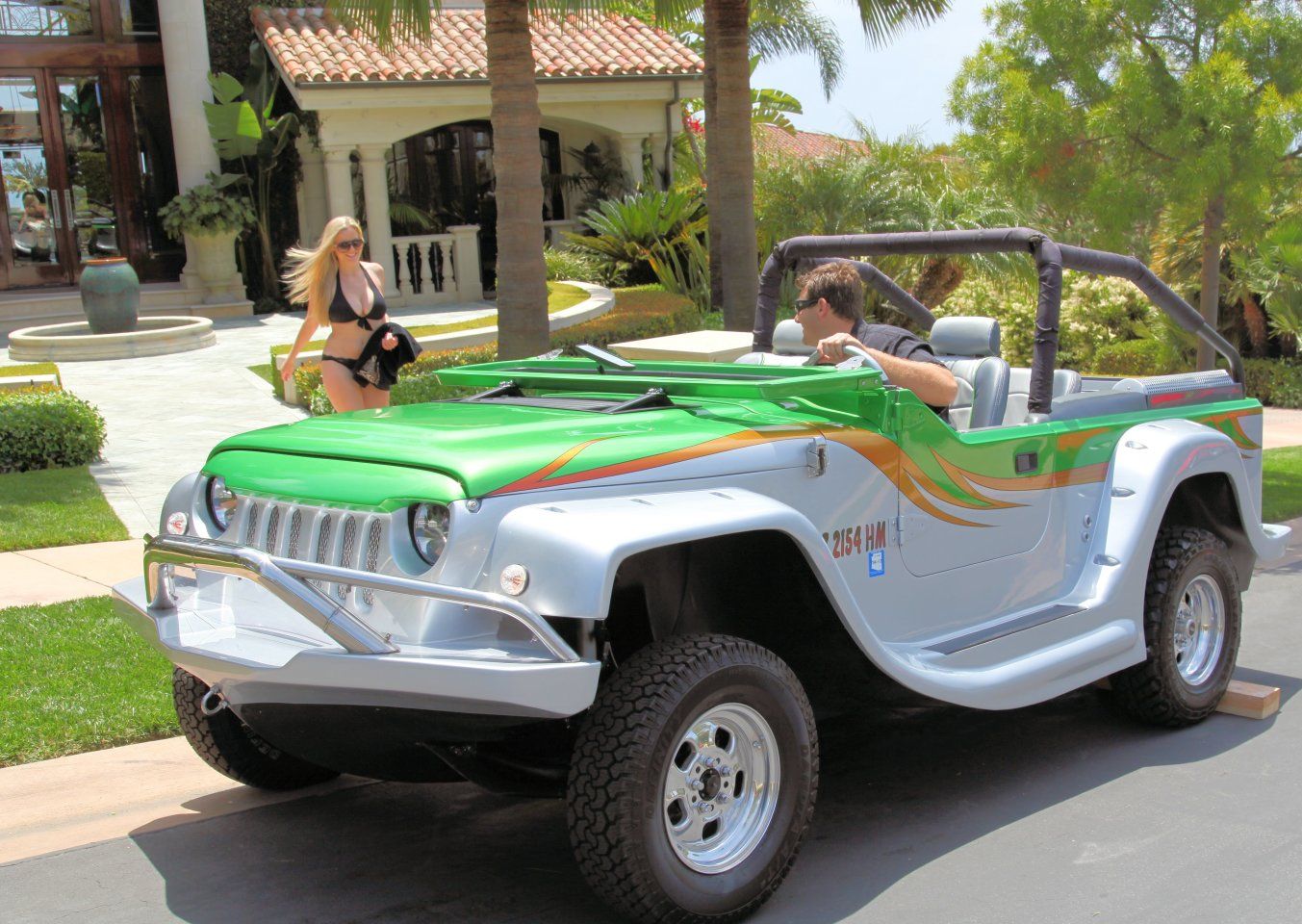In The Spy Who Loved Me, there is an iconic scene that sees a 1976 Lotus Esprit Series I, transform into a submarine after Bond drove the car into the water to escape a villain. This scene undoubtedly made every youngster watching the movie want to grow up and purchase that very automobile. But growing up implied learning that such cars don't exist, or at least that’s what they tell you. In 2014, the Daily Mail wrote about a two-seated submarine sports car, inspired by James Bond's famous sub-Lotus. That particular vehicle could reach a rather impressive maximum speed of 75 miles per hour under the water and came equipped with two water jets set behind rotating vent-like louvers at the front and propellers at the rear. The price for this Bond-like super toy? Nothing less than $1.4 million, but for some lucky millionaire, that’s peanuts to feel like a British super spy for a day.
The submarine sports car wasn’t the only crazy experiment of an amphibious car. In fact, MotorTrend reports that in 1999, engineer and entrepreneur Dave March established WaterCar, a company that intended to build amphibious cars that were perfectly adapted for both land and sea. March brought his vision to reality with the Python, his first WaterCar prototype, which broke vehicle speed records in 2010, achieving 127 miles per hour on land and 60 miles per hour on the water. The Python, however, needed a boat launch to reach the water because of its low ground clearance, so March and his team started developing the Panther, which was even more impressive than the Python. For those who always dreamed about driving a James Bond-like super car, here’s everything you need to know about the WaterCar Panther amphibious vehicle.
We previously reported that WaterCar had ceased operations and was no longer building amphibious cars. This is, in fact, not true, so we have updated this article accordingly.
It Was A Long Road For The Python To Get To The Panther
Most investors and engineers will tell you that there’s a lot of time between concept and prototype, and along the way, you’ll encounter many unexpected challenges. We can see this even in the development of a fully operational amphibious vehicle. Because when it comes to amphibious cars, there have been several significant attempts at developing them over the years, demonstrating that automakers and engineers never gave up on the idea of seeing vehicles swimming in lakes and oceans.
For instance, the German army deployed the Volkswagen Type 166 Schwimmwagen back in the Second World War. And years later, the public got to see the Amphicar 770 at the 1961 New York Auto Show. Since then, other inventors came up with their own versions of amphibious cars. One of them was the WaterCar Python prototype.
The Python “looked like a fourth-gen Chevy Camaro and succeeded at being a far better amphibious vehicle than the original Amphicar,” says MotorTrend. “The Corvette-powered Python set amphibious vehicle speed records in 2010, reaching 127 mph on land and 60 mph on the water.”
The Python, however, had a drawback. It needed a boat launch to enter the water because of its low ground clearance. Fast-forward, and Dave March came up with a new amphibious vehicle that didn’t require a boat launch. This was the Panther, an amphibious car modeled after the Jeep, which had a hydraulic suspension that can be instantly raised or lowered.
This Is What Made The WaterCar Panther Amphibious Vehicle The Coolest Jeep-Like Car Of The 2010s
Even though amphibious cars come in all shapes and sizes and gearheads hardly consider them a novelty anymore, the Panther was a special breed due to its distinctive characteristics. The WaterCar came equipped with a rear-mounted Honda 3.7-liter V6 engine, and a four-speed manual gearbox. MotorTrend says that the vehicle achieved propulsion at sea thanks to a Panther Jet engine driven by the V6. The Jeep-like WaterCar could reach a top speed of 80 miles per hour on land, and on water, it reached 45 miles per hour. If the Panther caught your attention, and you are considering purchasing a WaterCar, you should check out the company's website for details on its latest models and developments, including the introduction of a new electric model!



